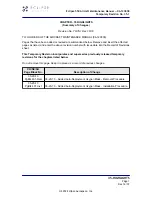
11
2.8 INSPECTION AND WING INFLATION ON THE GROUND
After your gear is thoroughly checked and the weather conditions
deemed favourable for flying, inflate your ROLLER as many times as
necessary to familiarise yourself with its behaviour. The smooth inflation
is easily done. An over-energetic handling is not necessary to bring
the wing overhead as it will gently climb with minimum tension on the
harness when moving forward. The sequence can be made easier by
using the A-risers.
Do not pull, but rather accompany them naturally, following the rising
arcing movement of the wing. Once the wing has climbed overhead,
simply apply the correct amount of brake pressure to keep the ROLLER
stationary.
3. THE FIRST FLIGHT
3.1 CHOOSE THE RIGHT LOCATION
For the first flight we recommend going to your usual flying area and that
a qualified instructor is present and supervising the entire procedure.
When arriving at the take-off, the pilot should assess the following
conditions: wind speed and direction, possible areas of rotor, take-off is
clear of obstacles, etc.
A defined flight plan should be formulated and this should include taking
note of the topography, obstructions and risk areas to avoid. The take-off
zone should be sufficiently large and free of obstacles.
Before takeoff, inspect the wing, harness, helmet and any other
equipment.
Given that the ROLLER can fly in a wide range of conditions, it is
essential to assess the conditions and terrain before every flight. The
conditions must also be suitable for the pilot’s skill level and experience.
Just because the wing is fast, pilots should not make the mistake of
underestimating the conditions and taking off in unsuitable and unsafe
circumstances.
3.2 PREPARATION
Repeat the procedures detailed in chapter 2 UNPACKING AND
ASSEMBLY to prepare your equipment.
3.3 FLIGHT PLAN
Planning a flight before taking off to avoid possible problems later is
always a good idea.
3.4 PRE-FLIGHT CHECK LIST
Once ready, but before taking off, conduct another equipment inspection.
Conduct a thorough visual check of your gear with the wing fully open, the
lines untangled and properly laid out on the ground to ensure that all is in
working order. Be certain the weather conditions are suited to your flying
skill level.
3.5 WING INFLATION, CONTROL AND TAKE-OFF
The ROLLER takeoff phases are the same as with conventional
paragliders.
With a standard breeze and once everything is checked, it is important to
adjust the position of the trimmers to neutral. Please note that because
the takeoff speed is greater than with a larger surface glider, a speed
wing requires more space for the takeoff run.
The wing will inflate cleanly after a proportionate pull. If it is necessary
to control the wing during the acceleration phase, we recommend
Содержание ROLLER
Страница 1: ...USER S MANUAL ROLLER...
Страница 21: ...21 10 3 RISERS LAYOUT...
Страница 25: ...The importance of small details niviuk com...










































